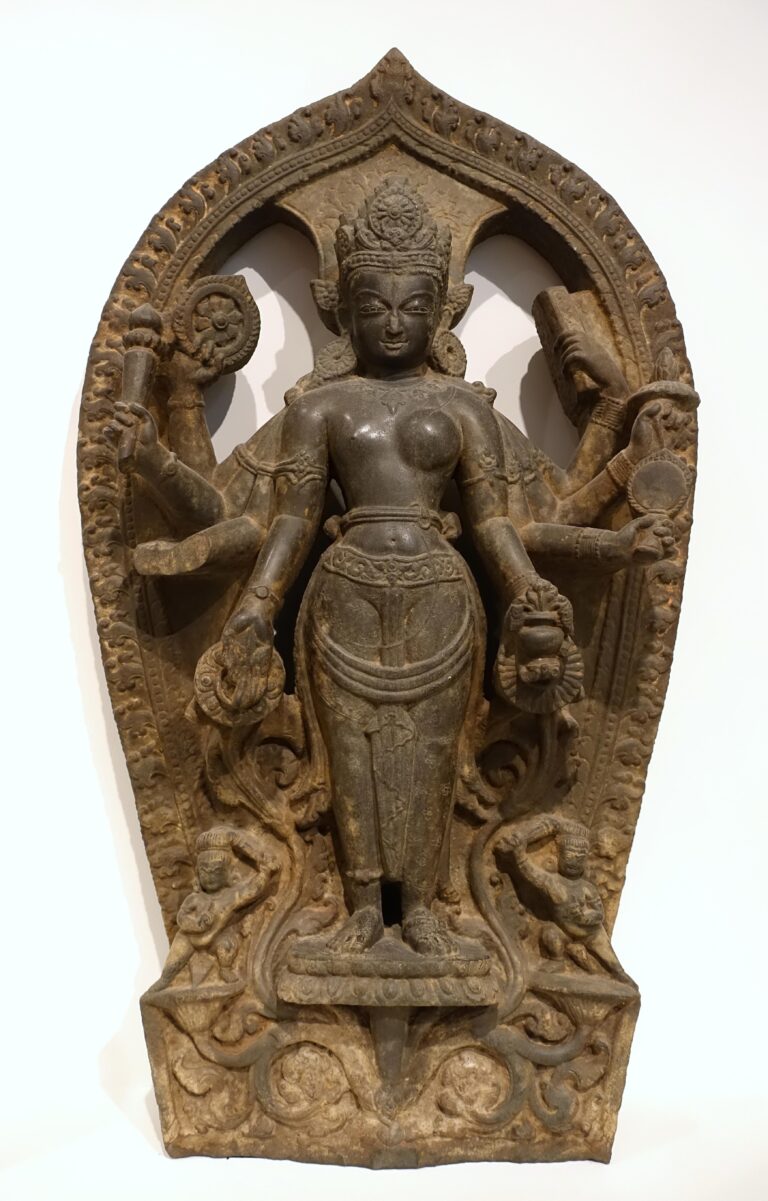FBI Dallas and Dallas Museum of Art Unite to Restore Ancient Nepali Artifact
In a landmark cultural restitution initiative, the FBI’s Dallas Field Office has partnered with the Dallas Museum of Art to facilitate the repatriation of the Stele of Lakshmi-Narayana to Nepal. This ancient Hindu relic, renowned for its artistic and religious significance, has been returned to its country of origin, underscoring a shared dedication to rectifying past cultural misappropriations and honoring international heritage laws.
Highlights of this collaborative repatriation include:
- Artifact Background: The stele, estimated to be around 1,200 years old, exemplifies the rich religious artistry of medieval Nepal.
- Legal and Diplomatic Coordination: The FBI worked closely with Nepalese officials and international agencies to ensure a lawful and smooth transfer.
- Ethical Museum Practices: The Dallas Museum of Art voluntarily surrendered the artifact, reinforcing its commitment to provenance integrity and cultural respect.
| Artifact | Estimated Age | Place of Origin | Current Status |
|---|---|---|---|
| Stele of Lakshmi-Narayana | Circa 1,200 years | Nepal | Returned to Nepalese Government |
Cultural and Historical Importance of the Lakshmi-Narayana Stele
The Stele of Lakshmi-Narayana stands as a remarkable testament to the religious and artistic heritage of South Asia, particularly reflecting the spiritual traditions of medieval Nepal. This intricately carved stone slab portrays the divine couple Lakshmi and Narayana, central figures in Hindu theology, and dates back to approximately the 11th century CE. The stele’s detailed iconography offers invaluable insights into the devotional customs and artistic techniques prevalent during that era.
Its significance extends beyond religious symbolism, serving as a cultural emblem that encapsulates Nepal’s historical identity and artistic excellence. Key facets of the stele’s heritage include:
- Traditional Craftsmanship: Showcasing advanced sculptural methods and iconographic storytelling rooted in sacred Hindu texts.
- Symbolic Authority: Reflecting the intertwining of divine imagery with the legitimization of ruling powers in ancient Nepal.
- Preservation of Legacy: Its return reinforces global respect for cultural patrimony and the importance of safeguarding heritage artifacts.
As a cultural ambassador, the stele bridges past and present, highlighting Nepal’s role as a vibrant nexus of religious and artistic expression.
Legal Process and Investigative Strategies Behind the Repatriation
The successful return of the Stele of Lakshmi-Narayana was the result of a comprehensive legal and investigative campaign spanning multiple jurisdictions. The FBI Dallas coordinated with Nepalese government representatives and international bodies, operating under the framework of the UNIDROIT Convention on Stolen or Illegally Exported Cultural Objects (1995). This international treaty, alongside U.S. laws such as the Cultural Property Implementation Act and the National Stolen Property Act, provided the legal foundation for the artifact’s restitution.
Key investigative measures included:
- Advanced Provenance Research: Utilizing digital tools and archival records to trace the artifact’s ownership history.
- Global Law Enforcement Collaboration: Joint efforts involving the FBI Art Crime Team, INTERPOL, and Nepal’s Ministry of Culture.
- Evidence Collection: Field investigations and interviews that established clear proof of the stele’s illicit exportation.
| Phase | Action | Result |
|---|---|---|
| Investigation | Tracing artifact’s provenance and ownership | Confirmed unauthorized export |
| Legal Review | Assessment of ownership claims under U.S. and international statutes | Authorized repatriation to Nepal |
| Repatriation | Physical handover and ceremonial transfer | Successful restitution of the artifact |
Enhancing Global Protections for Cultural Heritage
To effectively combat the persistent threat of illicit trafficking and loss of cultural treasures, it is imperative that countries strengthen international cooperation and legal safeguards. Bolstering bilateral treaties can expedite the return of stolen cultural objects and increase accountability among nations. Moreover, adopting uniform international standards for the cataloging, documentation, and monitoring of cultural assets will empower authorities to act swiftly against illegal activities.
Investing in specialized training for law enforcement officers and museum professionals worldwide enhances their ability to detect and prevent art crimes. Public education initiatives and community involvement are equally vital, fostering a collective sense of responsibility for cultural preservation. Integrating cultural property protections into global trade and customs regulations will further close gaps exploited by traffickers.
| Strategy | Focus Area | Anticipated Impact |
|---|---|---|
| Bilateral Treaties | Legal Collaboration | Accelerated artifact restitution |
| Standardized Protocols | Artifact Documentation & Tracking | Enhanced identification and recovery |
| Training Initiatives | Law Enforcement & Museum Staff | Improved detection and prevention skills |
| Community Outreach | Public Awareness | Broadened stewardship and vigilance |
| Trade Regulation Integration | Customs & International Trade | Diminished illicit trafficking routes |
Conclusion
The handover of the Stele of Lakshmi-Narayana from the FBI Dallas and the Dallas Museum of Art to Nepal’s government represents a pivotal advancement in the protection and repatriation of cultural heritage. This cooperative achievement exemplifies the dedication of both U.S. and Nepalese authorities to uphold ethical stewardship and international cultural property laws. As the artifact returns to its homeland, it not only restores a vital piece of Nepal’s history but also reinforces the global commitment to combating the illicit trade of antiquities.





